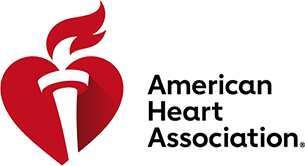The prevalence of high BP rises dramatically with increasing age. By partnering with patients to help remove obstacles to treatment adherence and bring their blood pressure under control, you can save and extend lives. Focus on their overall health, including diet, sodium intake, physical activity, alcohol consumption, and smoking, outlining ways they can reduce their risk of CVD.
Creating a blame-free environment in which patients are recognized for achieving treatment goals and encouraged to answer treatment-related questions honestly is an important step to tackling the problem of treatment nonadherence.
Empower Your Patients to Control Their High Blood Pressure
- Guide patients and their families to resources that can help support recommended lifestyle changes and improve adherence to treatment plans
- Encourage patients to self-manage using SMBP
- Engage your patients in a collaborative approach to care using evidence-based communication skills including the teach-back method, which helps clinicians determine if patients understand information that has been shared with them. Have patients repeat the information back in their own words, describing the actions they need to take concerning their health. Use this method to improve adherence when training patients on SMBP
“Practices have to engage the community if we want to improve the health of this country.”
Practice Assessment: How Well Do You Partner?
Do you…
Foster Ongoing BP Measurement and Communication
Once blood pressure is controlled, patients with a diagnosis of hypertension can use SMBP to monitor their blood pressure.
Patients need clear instructions about what to do if they get a reading outside of the expected range (low or high) or if they have symptoms (chest pain, shortness of breath, dizziness, etc.). As a basis for clinical decisions, patients should record a full week’s worth of SMBP, following the recommended protocol and share all readings with the clinical team.
Local partnerships can also help some patients—particularly those with lower incomes—achieve their treatment goals. Following through on lifestyle recommendations may be challenging for some patients with poor social support, obstacles to exercise and healthy foods, and challenging finances. When possible, help patients who need support from local partners connect with organizations that can help.
Simplifying medication regimens, either by less frequent dosing or by single-pill combination drug therapy, also improves adherence.
Featured Resources
Use these resources to follow current best practices and improve outcomes.
Partner with Patients Quick Start Guide
To help you partner with your patients, use this resource to understand what tools are available to you.
Sodium (Salt) and Your Blood Pressure
Help patients understand why too much salt can cause problems, and how to cook tasty food using less salt.
Steps to Improve Blood Pressure
Help patients improve their blood pressure with five lifestyle modifications.



